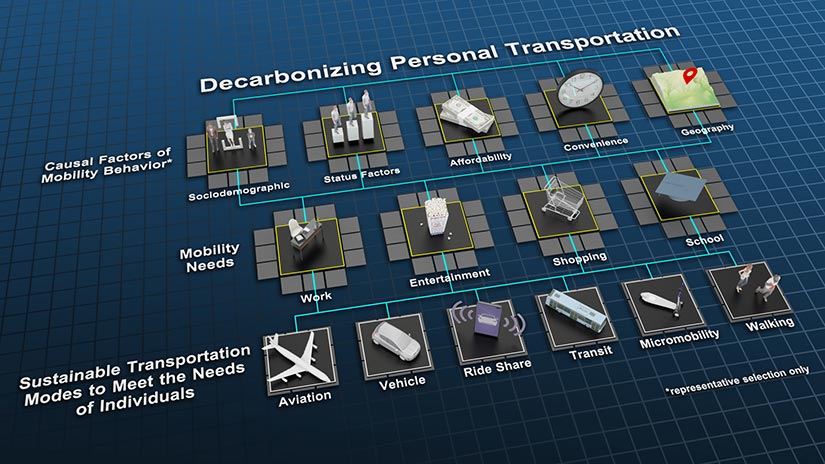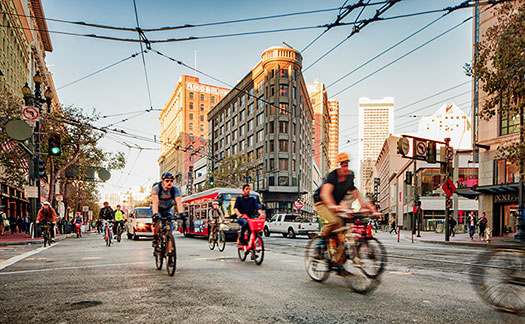Mobility Behavioral Science
NREL's mobility behavioral science research takes a comprehensive, people-centered approach to examining community patterns, with a focus on the interactions among populations, transportation options, energy systems, and the built environment.
We partner with research institutions, government agencies, and industry to tackle some of the world's most difficult sustainable mobility challenges while pursuing a better quality of life for all.
The Science of Understanding People's Transportation Options
NREL's behavioral scientists combine data, field observations, and analysis of trends and patterns to better understand and predict how people will respond to new sustainable mobility options. Identifying priorities related to cultural, social, environmental, economic, geographic, and political issues makes it possible to deliver clean and efficient transportation solutions that will meet the place-specific needs of diverse communities nationwide.

Supporting Breakthroughs To Meet Diverse Mobility Needs
NREL's behavioral science expertise spans decision-making science, sociology, anthropology, urban planning, and cognitive science to study how individual practices can impact transportation decarbonization, efficiency, and mobility equity goals.

Our mobility behavioral science research helps smooth a path for transitions to new technologies while benefiting the planet, the economy, and society. For example, if plans for sustainable transportation focus exclusively on increasing the adoption of privately owned electric vehicles, this shift in technology will primarily serve wealthy households. In both the country and the city, underserved populations may not own vehicles, have access to charging stations, or live in areas with many transportation options.
Instead, NREL researchers are exploring a wider spectrum of mobility options that behavioral science has helped identify as strategies that better meet the needs of working class and low-income populations. Additional solutions include electrifying mass transit buses and trains, on-demand ride-sharing, community car-sharing, and electric bikes and scooters. These options can give residents more consistent access to preventive health care, a larger pool of jobs, educational opportunities, and goods and services critical for daily living.
NREL behavioral scientists collaborate with researchers across the laboratory and around the globe on a range of mobility and clean energy projects.
Learn more about NREL's behavioral science research capabilities.
Publications
NREL published journal articles, conference papers, and reports about behavioral science.
Contact
Share

